1. Overview
Hedwig of Silesia (Heilige Hedwig von AndechsGerman, Święta Jadwiga ŚląskaPolish, HedvigisLatin; 1174 - October 15, 1243), a prominent member of the Bavarian comital House of Andechs, served as Duchess of Silesia from 1201 and of Greater Poland from 1231. She further ascended to the esteemed position of High Duchess consort of Poland from 1232 until 1238. Renowned for her profound piety, political acumen, and extensive charitable endeavors, Hedwig played a significant role in the social and religious development of Silesia. Her life was marked by deep spiritual devotion, active involvement in political mediation, and unwavering support for the poor and vulnerable. She was canonized as a saint by the Catholic Church in 1267 by Pope Clement IV, solidifying her enduring legacy as a patroness of Silesia and a symbol of compassion and faith.
2. Early Life and Family Background
Hedwig's early life was shaped by her noble birth and a formative education that instilled in her a strong sense of faith and duty.
2.1. Birth and Family
Hedwig was born in 1174 at Andechs Castle in the Duchy of Bavaria, a stronghold of the comital House of Andechs. Her parents were Count Berthold IV of Andechs, who also held the titles of Margrave of Carniola and Istria, and his second wife, Agnes of Wettin. Hedwig was part of a large and influential family, with several siblings who also played significant roles in European aristocracy and religious life. Her elder sister, Agnes of Merania, married King Philip II of France, though their marriage was later annulled in 1200. Another sister, Gertrude of Merania, became Queen of Hungary through her marriage to King Andrew II of Hungary, before her assassination in 1213. Through Gertrude, Hedwig was the aunt of Elizabeth of Hungary, who would also be canonized as a saint. Her youngest sister, Matilda (Mechtild), became an abbess at the Benedictine Abbey of Kitzingen in Franconia. Hedwig also had several brothers: Bishop Ekbert of Bamberg, who was also Count of Andechs-Merania; Berthold, who served as Archbishop of Kalocsa and Patriarch of Aquileia; and Henry, Margrave of Istria, who was the first lord of Carniola.
2.2. Education
Hedwig received her education at the Benedictine Abbey of Kitzingen in Franconia, where her younger sister Matilda later became abbess. This religious upbringing deeply influenced her, fostering a strong devotion to her faith and shaping her future commitment to charitable works and spiritual life.
3. Marriage and Role as Duchess Consort
Hedwig's marriage to Henry I the Bearded marked the beginning of her significant political and social influence, as she actively participated in the governance and stability of Silesia.
3.1. Marriage to Henry I the Bearded
At the young age of twelve, Hedwig was married to Henry I the Bearded, the son and heir of Boleslaus the Tall, Duke of Silesia from the Piast dynasty. Upon Henry's succession to his father's ducal title in 1201, he immediately faced considerable challenges from his Piast relatives. Initially, he contended with his uncle, Duke Mieszko IV Tanglefoot, who swiftly seized the Upper Silesian Duchy of Opole. In 1206, Henry and his cousin, Duke Władysław III Spindleshanks of Greater Poland, agreed to a territorial exchange, swapping the Silesian Lubusz Land for the Kalisz region. This agreement, however, provoked strong opposition from Władysław III's nephew, Władysław Odonic. The political tensions escalated, culminating in the Gąsawa meeting in 1227, where Henry narrowly escaped with his life. During this event, High Duke Leszek I the White was tragically killed by the men of the Pomerelian Duke Swietopelk II, reportedly instigated by Władysław Odonic.
3.2. Political Influence and Mediation
Hedwig demonstrated remarkable political acumen and played a crucial role in mediating conflicts and supporting her husband's reign. The year after Leszek I's death, Henry's ally, Władysław III Spindleshanks, succeeded Leszek I as High Duke. However, Władysław III's authority was still contested by his nephew in Greater Poland, leading him to appoint Henry as his governor in Kraków. This appointment once again entangled the Silesian duke in the ongoing dispute over the Seniorate Province. In 1229, Henry was captured and imprisoned at Płock Castle by his rival, Duke Konrad I of Masovia.
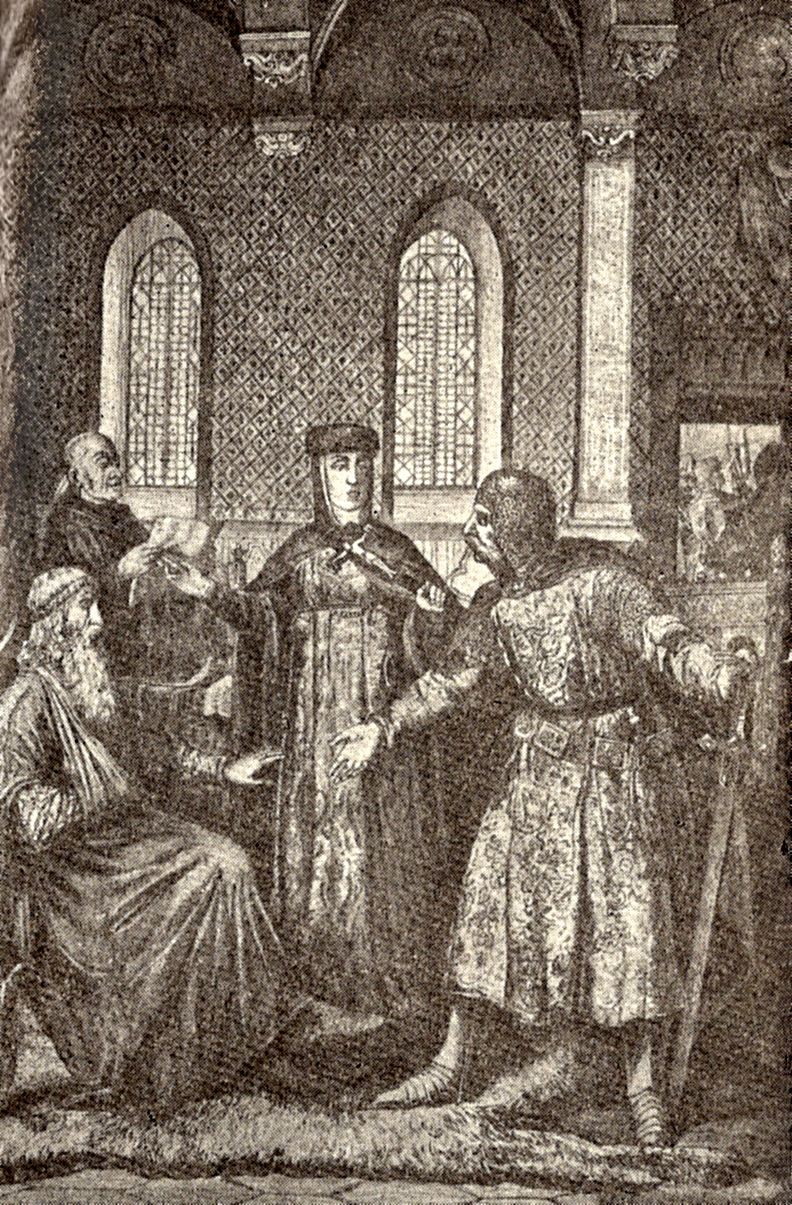
In a testament to her influence and courage, Hedwig traveled to Płock and personally pleaded for Henry's release, successfully securing his freedom. Her decisive actions significantly bolstered her husband's rule. Following the death of Polish High Duke Władysław III Spindleshanks in 1231, Henry also became Duke of Greater Poland. The following year, he successfully asserted his claim as High Duke at Kraków. This made Henry the first of the Silesian Piast descendants of Władysław II the Exile to gain control over both Silesia and the Seniorate Province, in accordance with the 1138 Testament of Bolesław III Krzywousty.
4. Widowhood and Charitable Activities
After the death of her husband, Hedwig dedicated her life to profound spiritual devotion and extensive charitable works, profoundly impacting the religious and social landscape of Silesia.
4.1. Life as a Widow
Upon the death of Henry I the Bearded in 1238, he was buried at the Cistercian monastery of nuns, Trzebnica Abbey (Kloster TrebnitzGerman), which he had established in 1202 at Hedwig's specific request. Hedwig accepted the loss of her beloved husband with deep faith. She reportedly stated, "Would you oppose the will of God? Our lives are His." Following his death, the widowed Hedwig moved into the monastery, which was then led by her daughter, Gertrude. While residing there, she adopted the religious habit of a lay sister, demonstrating her spiritual commitment, though she did not take formal vows.
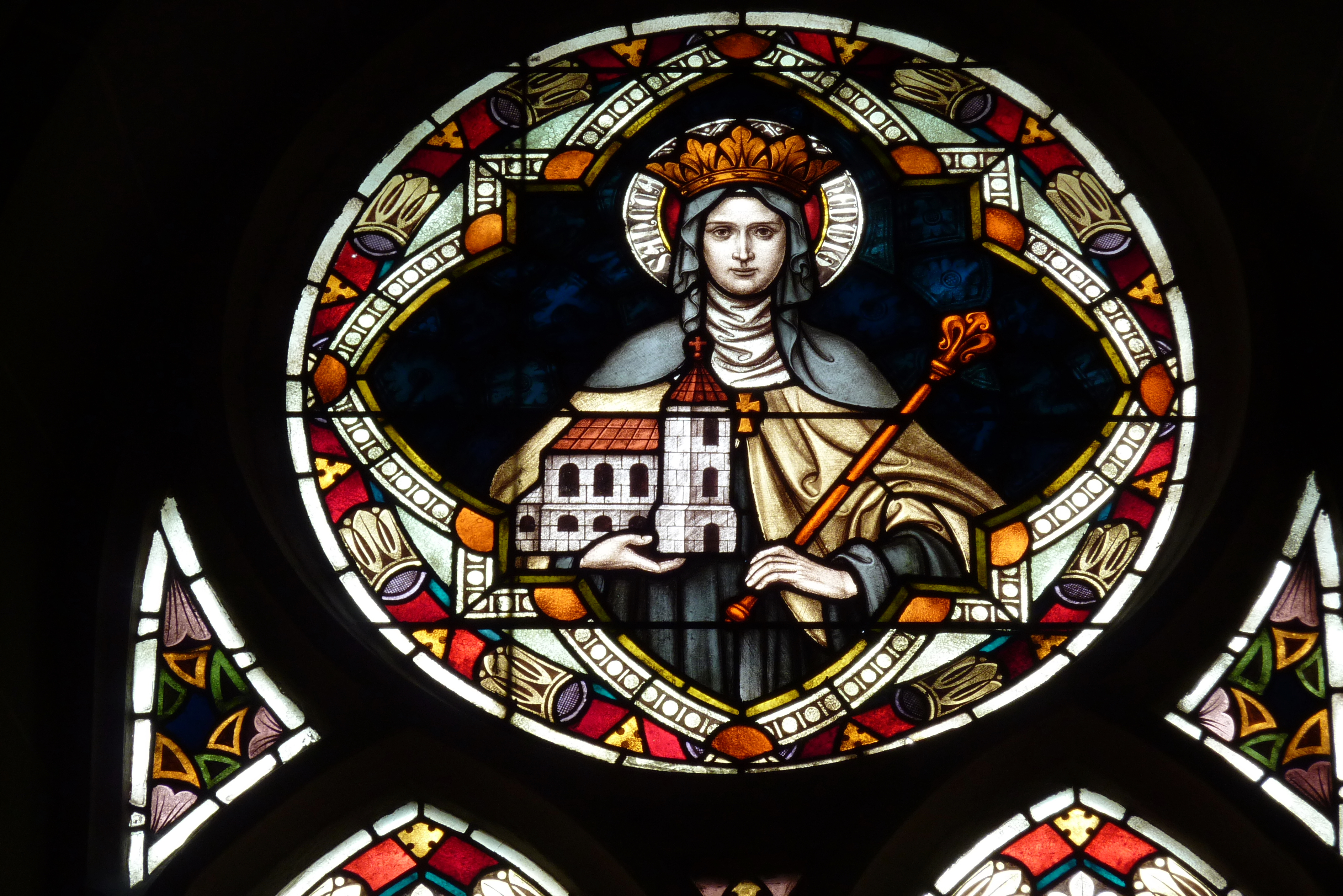
4.2. Charitable Works and Patronage
Hedwig was known for her extraordinary piety and unwavering commitment to charity. She actively supported her husband in donating to religious institutions, including the Augustinian provostry at Nowogród Bobrzański (NaumburgGerman) and the commandery of the Knights Templar at Oleśnica Mała (Klein OelsGerman). Her compassion extended to all in need; she consistently provided aid to the poor, widows, and orphans. She founded several hospitals to care for the sick and lepers, demonstrating a deep concern for the most vulnerable members of society. Hedwig devoted her entire fortune to the Catholic Church, eventually becoming penniless herself. It is said that she never allowed anyone to leave her presence without comfort, and on one occasion, she spent ten weeks teaching the Lord's Prayer to a poor woman. A well-known legend recounts that she walked barefoot even in winter. When the Bishop of Wrocław urged her to wear shoes for her health, she complied by carrying them in her hands, continuing her barefoot practice while outwardly obeying the bishop's request.
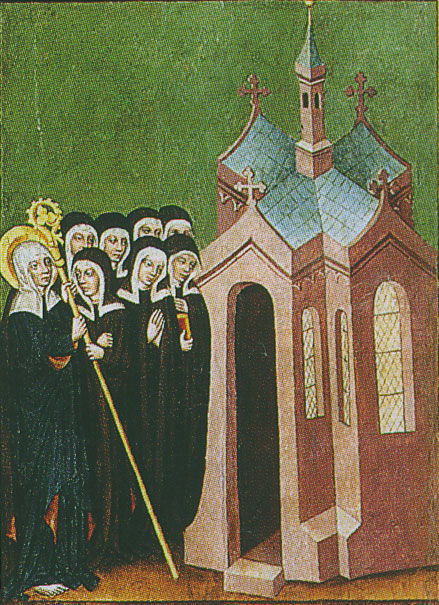
4.3. Invitation of German Settlers
Hedwig played a crucial role in the development of Silesia by actively inviting numerous German religious individuals from the Holy Roman Empire to settle in the region. Furthermore, she encouraged German settlers to establish new cities, towns, and villages as part of the Ostsiedlung (East German settlement) movement. These settlers were instrumental in cultivating barren parts of Silesia, transforming them into productive agricultural lands and contributing significantly to the region's economic and demographic growth.
4.4. Impact of the Mongol Invasion
Despite her deep faith and charitable work, Hedwig faced profound personal tragedy. Her only surviving son, Henry II the Pious, who had succeeded his father as Duke of Silesia and Polish High Duke, was killed during the First Mongol invasion of Poland at the Battle of Legnica (WahlstattGerman) in 1241. Hedwig had vainly awaited the support of Emperor Frederick II for her son. The hopes for a re-united Poland were shattered with Henry II's death, and Silesia subsequently fragmented into numerous Piast duchies under Henry II's sons. In response to this devastating loss, Hedwig and her daughter-in-law, Henry II's widow Anna of Bohemia, established a Benedictine abbey at Legnickie Pole, the site of the battle. This abbey was settled by monks who came from Opatovice in Bohemia, serving as a memorial and a center of spiritual life.
5. Death and Burial
Hedwig died on October 15, 1243. She was buried alongside her husband, Henry I the Bearded, in Trzebnica Abbey. Relics of Saint Hedwig are preserved in several locations, including Andechs Abbey in Bavaria, her birthplace, and St. Hedwig's Cathedral in Berlin. In March 2020, the discovery of Hedwig's remains, which had been missing for centuries, was reported. The remains were found in her sanctuary in Trzebnica, within a silver casket that bore a lead tablet with an inscription confirming Hedwig's identity.
6. Canonization and Legacy
Hedwig's life of piety and charity led to her recognition as a Catholic saint, leaving a lasting spiritual and cultural impact.
6.1. Canonization
Hedwig was canonized in 1267 by Pope Clement IV, a notable supporter of the Cistercian order. Her canonization was initiated and strongly advocated by her grandson, Prince-Archbishop Władysław of Salzburg. Her elevation to sainthood recognized her exemplary life of faith, her extensive charitable works, and her steadfast devotion to God and the Church.
6.2. Patronage and Feast Day
Saint Hedwig is widely revered as the patroness saint of Silesia, of Andechs (her ancestral home), and of the Roman Catholic Archdiocese of Wrocław and the Roman Catholic Diocese of Görlitz. Her feast day is celebrated on October 16 according to the General Roman Calendar. The Order of Saint Paul the First Hermit, which considers her a great benefactor, celebrates her feast day on June 8. A 17th-century legend recounts that during a pilgrimage to Rome, Hedwig stopped at Bad Zell in Austria, where she miraculously caused healing waters to spring forth from a source that still bears her name today.
6.3. Cultural Impact and Memorials
Saint Hedwig's legacy extends beyond her religious veneration, influencing cultural artifacts and architectural landmarks.
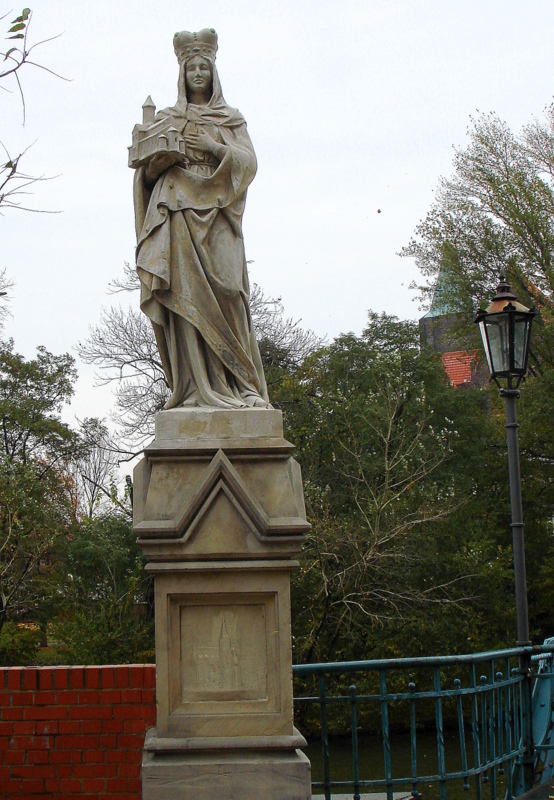
The distinctive medieval glass vessels known as Hedwig glasses are named after her, reflecting her association with such precious objects.
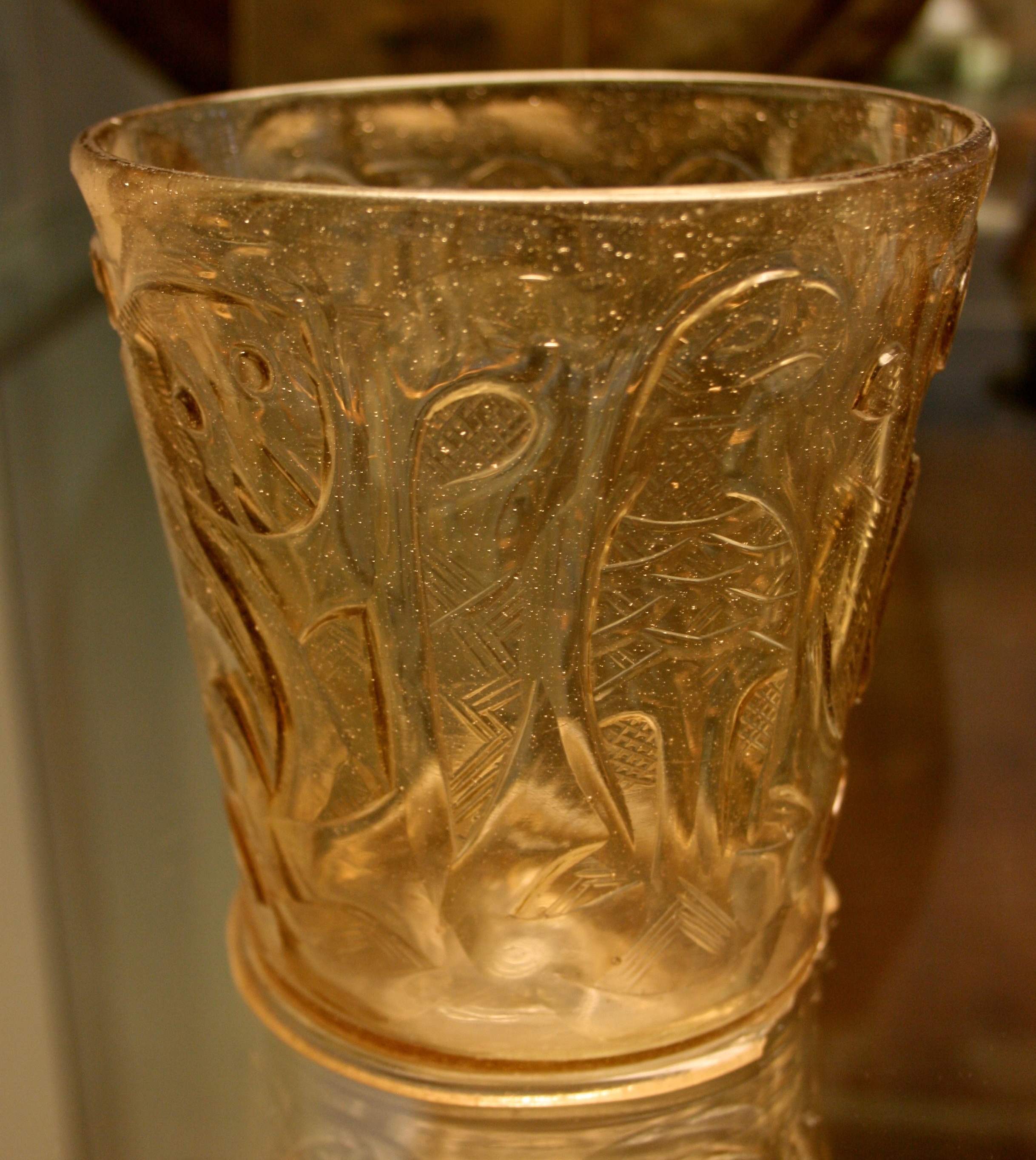
In 1773, the Prussian king Frederick the Great, who had conquered and annexed the majority of Silesia during the First Silesian War, commissioned the construction of St. Hedwig's Cathedral in Berlin. This cathedral was built to serve the Catholic Upper Silesian immigrants who had settled in Berlin and has since 1930 become the cathedral of the Roman Catholic Archdiocese of Berlin. Following the expulsion of almost all Germans from Silesia after World War II, German Silesians carried Hedwig's veneration to various parts of Germany, further cementing her cultural and spiritual significance. Her image has been preserved in various forms of art, reflecting her enduring spiritual significance.
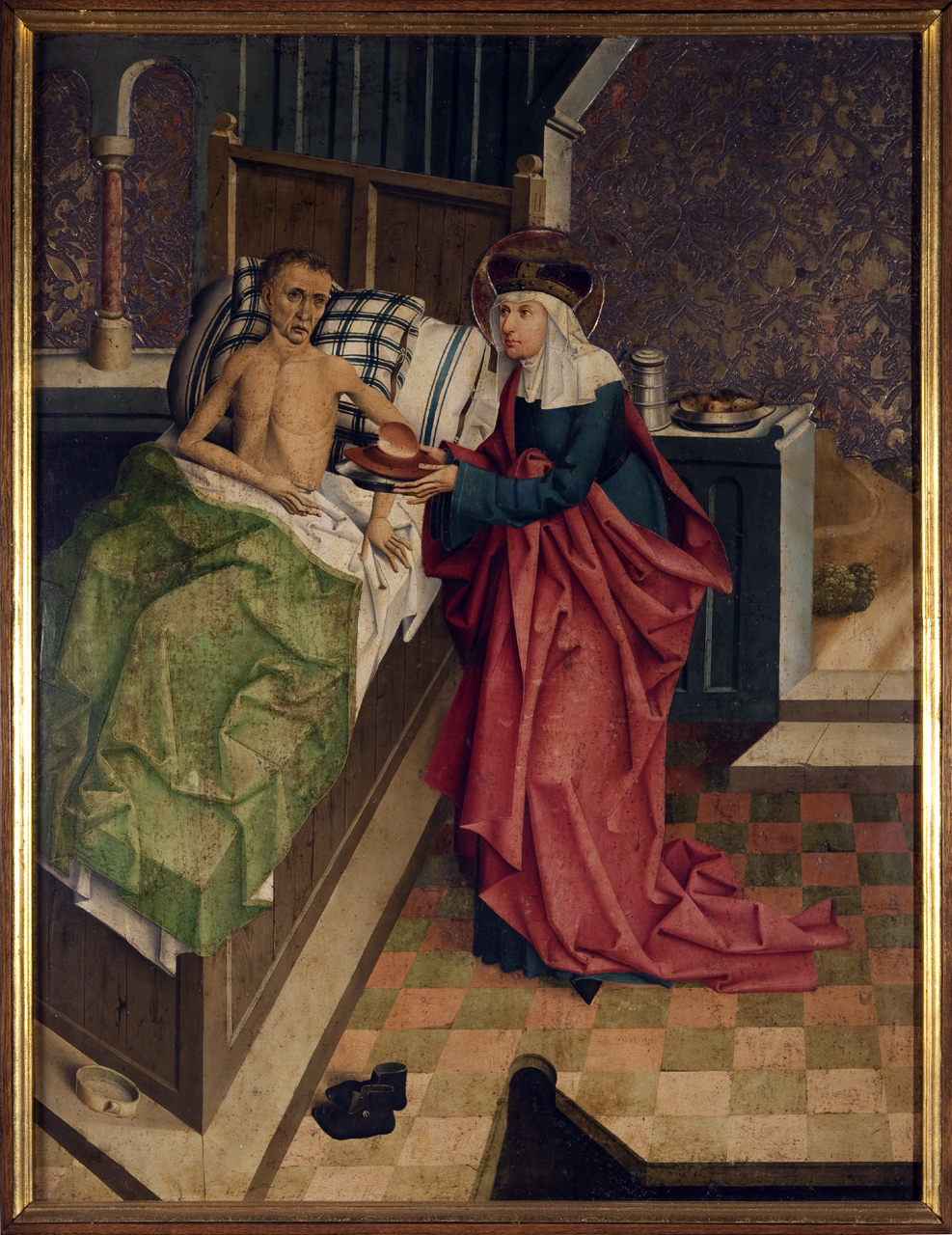
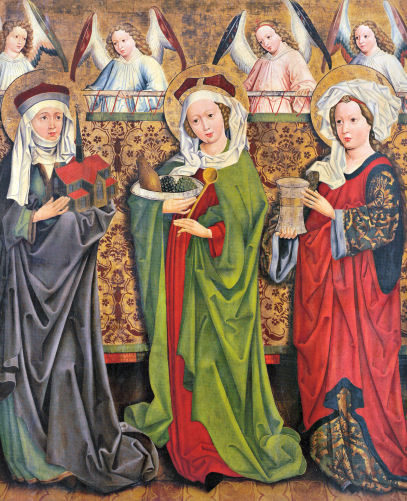
Later artistic representations continued to highlight her piety and connection to key religious figures.
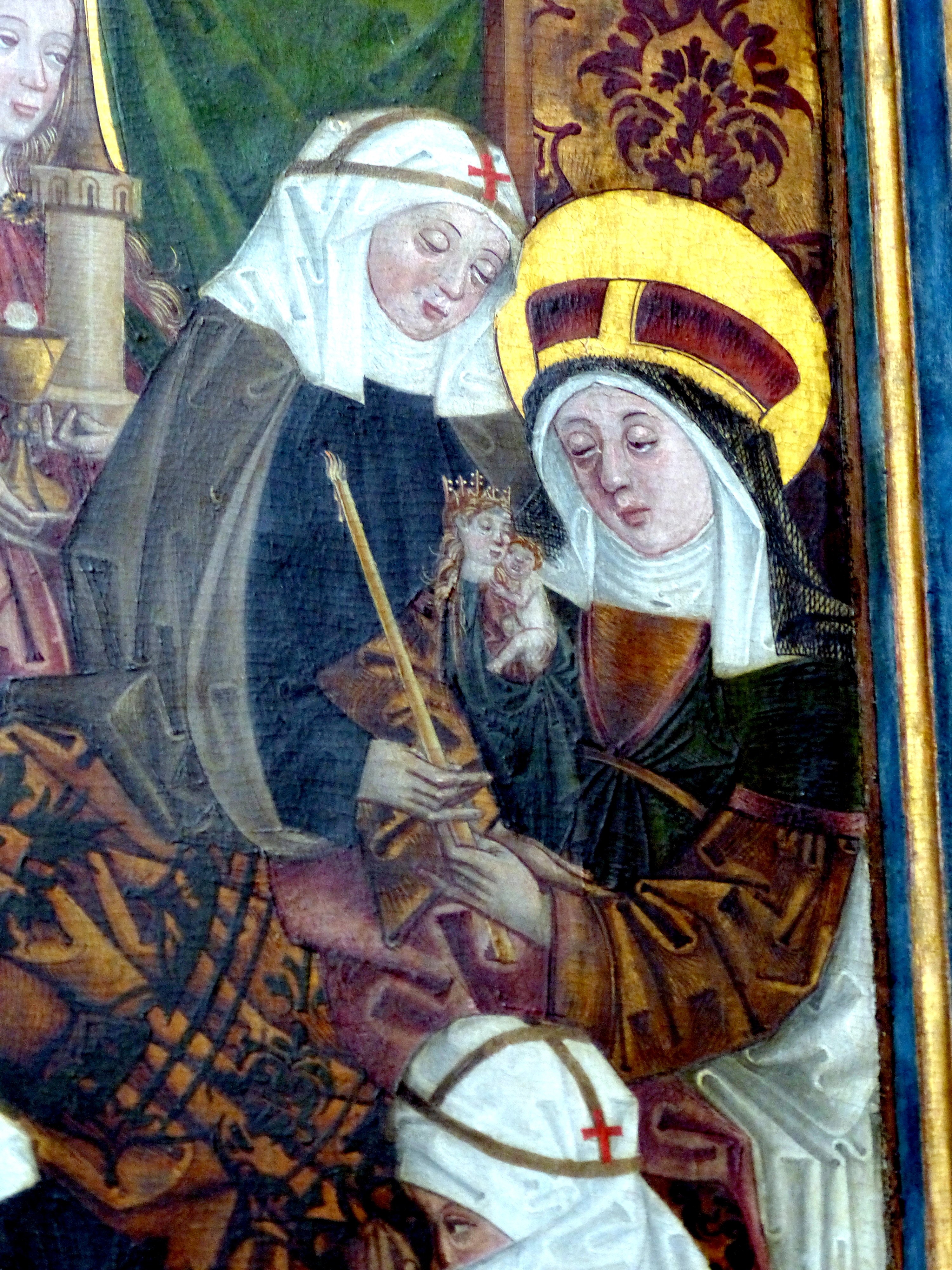
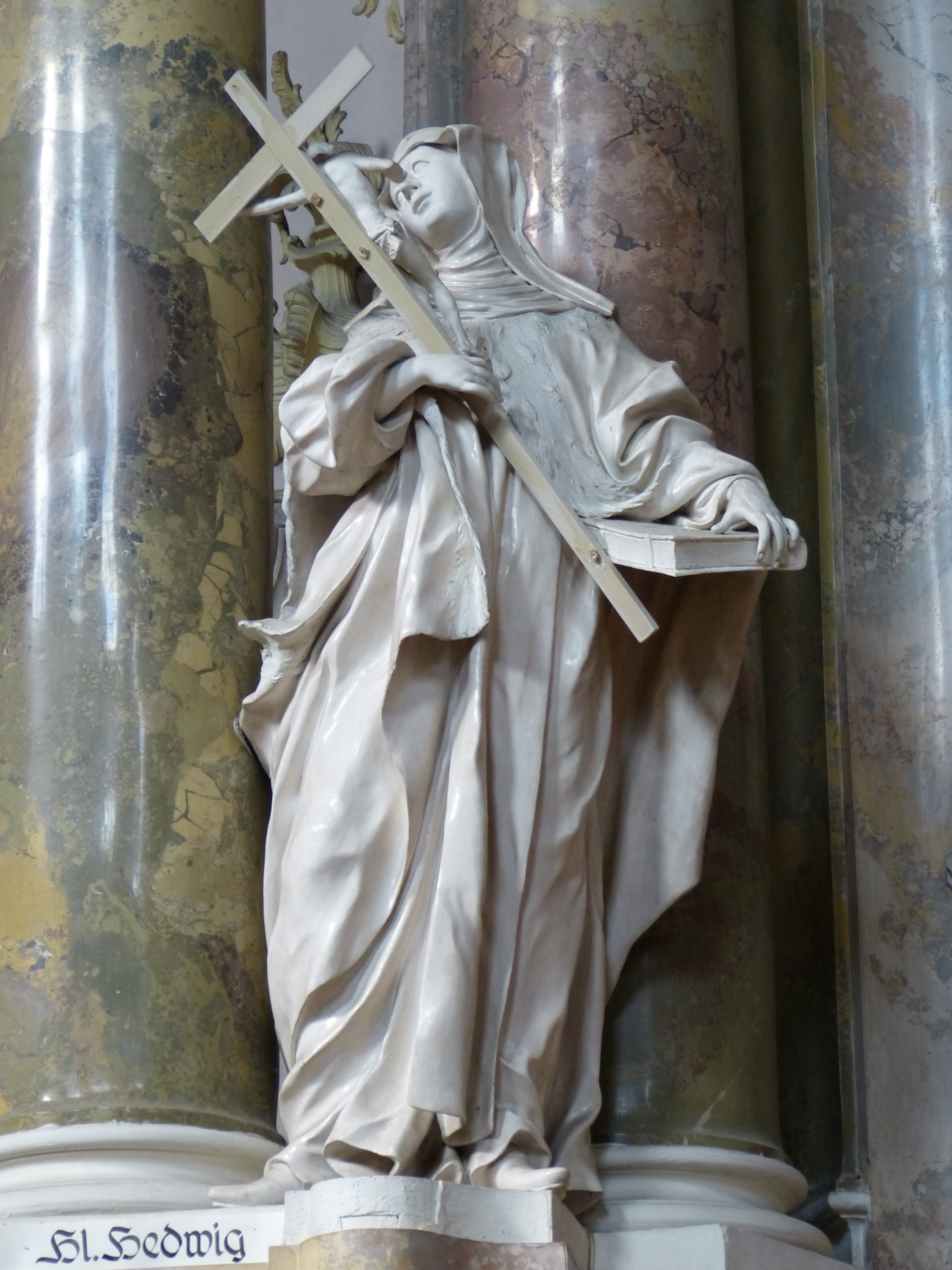
Her burial site and commemorative items further solidify her venerated status.
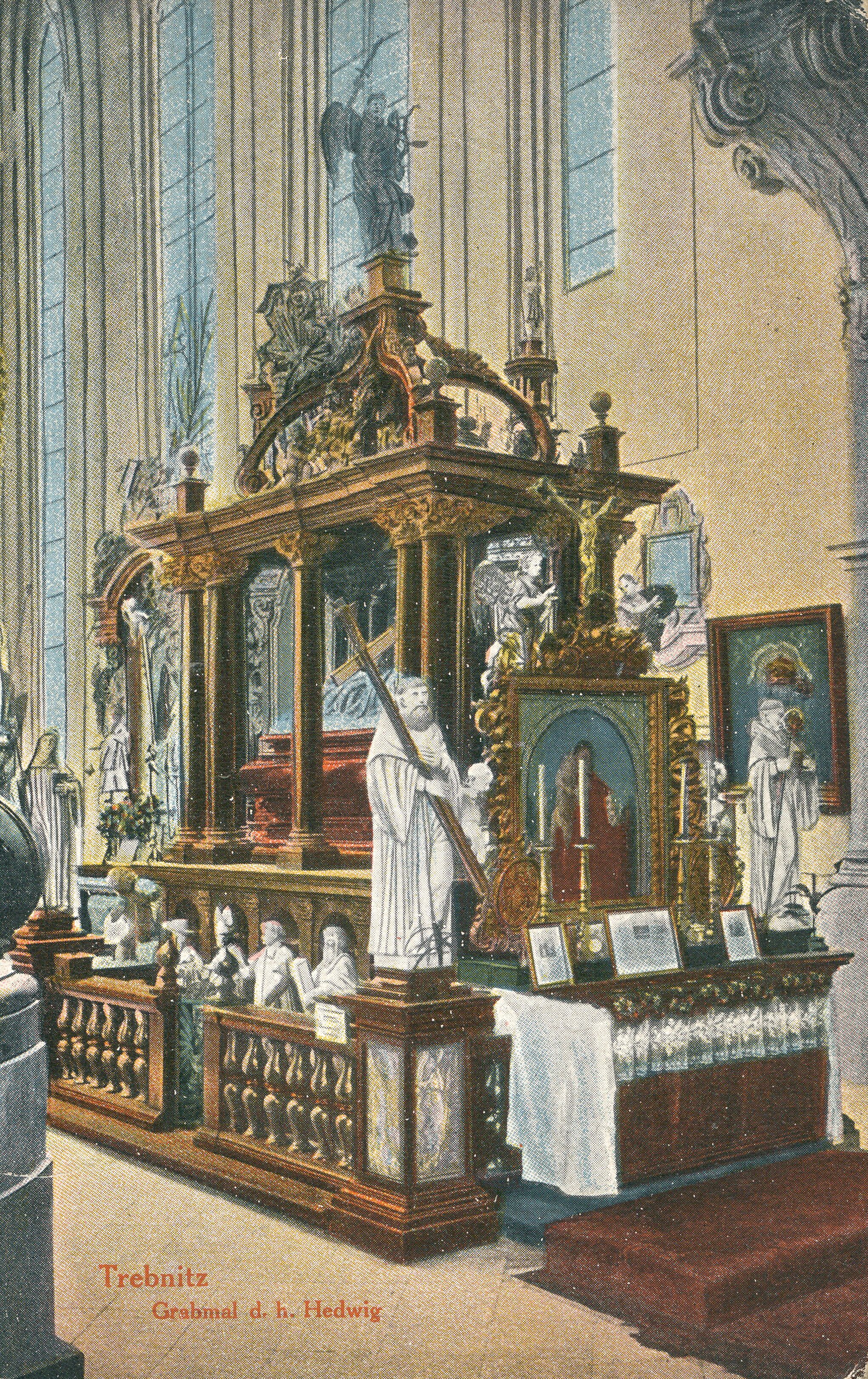
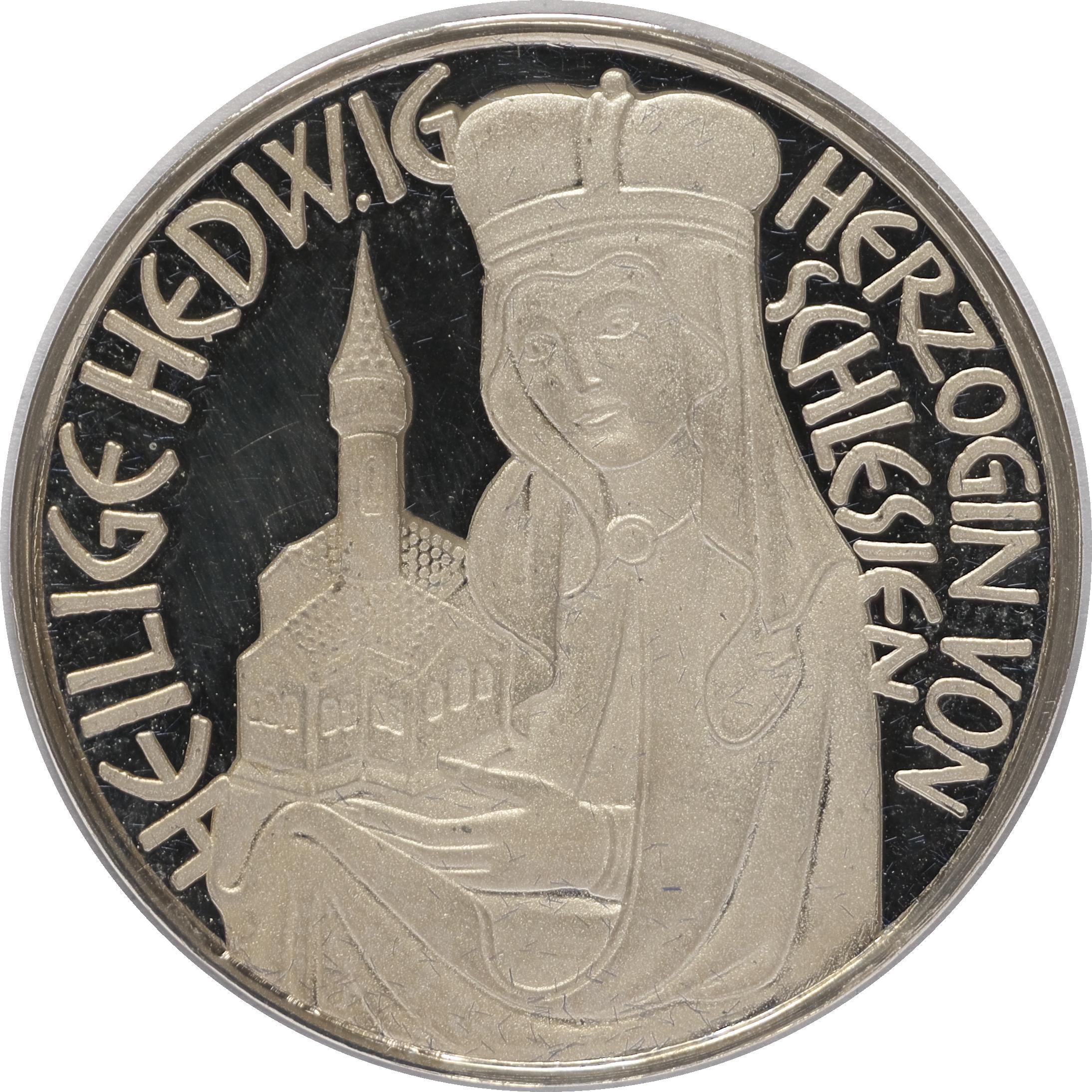

7. Children
Hedwig and Henry I the Bearded had seven children:
- Agnes (circa 1190 - before May 11, 1214).
- Bolesław (circa 1191 - September 10, 1206/08).
- Henry II the Pious (circa 1196 - killed in Battle of Legnica, April 9, 1241).
- Konrad the Curly (circa 1198 - Czerwony Kosciol, September 4, 1213).
- Sophie (circa 1200 - before March 22/23, 1214).
- Gertrude (circa 1200 - Trebnitz, December 6/30, 1268), who became Abbess of Trebnitz.
- A son [Władysław?] (born before December 25, 1208 - died 1214/17).